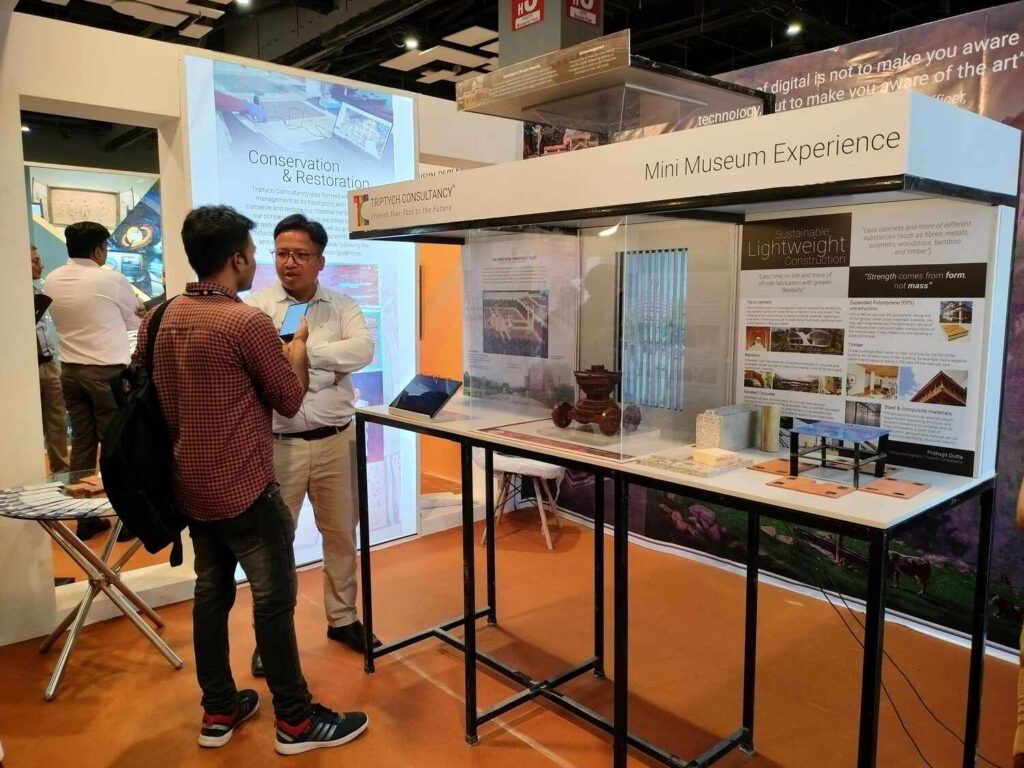We were fortunate and honoured to be invited to be part of the first International Museum Expo held in India. It was organised by the Ministry of Culture from 18th-20th May 2023 at Pragati Maidan, New Delhi. This was also the first time we (our company) took part in such a public event showcasing our work, ideas and vision. We went in with low expectations (as did some other participants) because we weren’t quite sure what the public response would be. To our surprise, the footfall was amazing. We were at our booth engaging with visitors from 9 am to 8 pm on all 3 days.
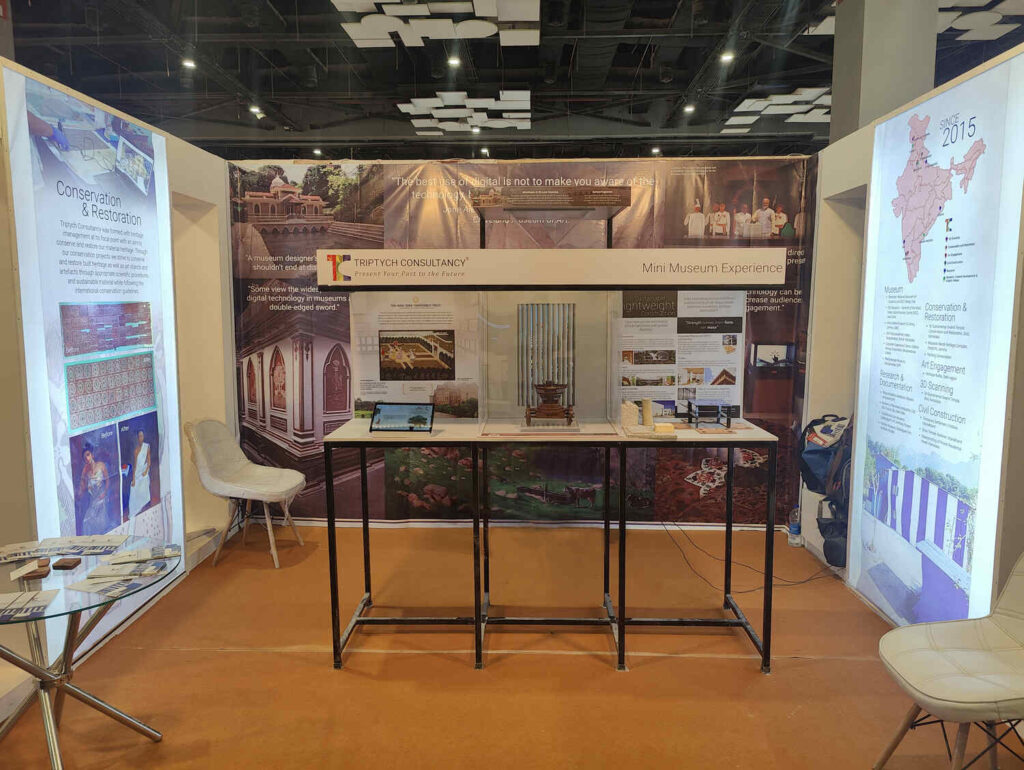
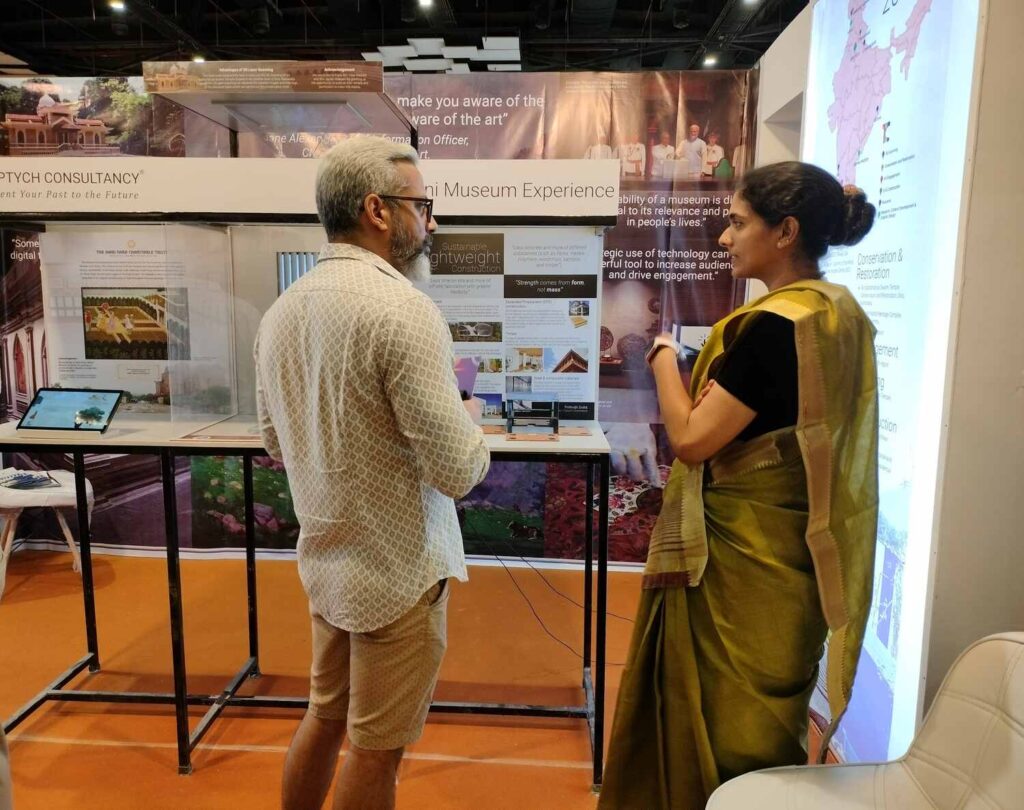
The visitor to our exhibit space was presented with the concept of deriving an authentic museum experience by using the replica of existing museum artifacts. This allowed value addition through innovational curation, using appropriate technology, and allowing interactive exchanges between the curator and the visitor. This personal touch helps bring about various new viewpoints that in turn make the museum sustainable and thriving.
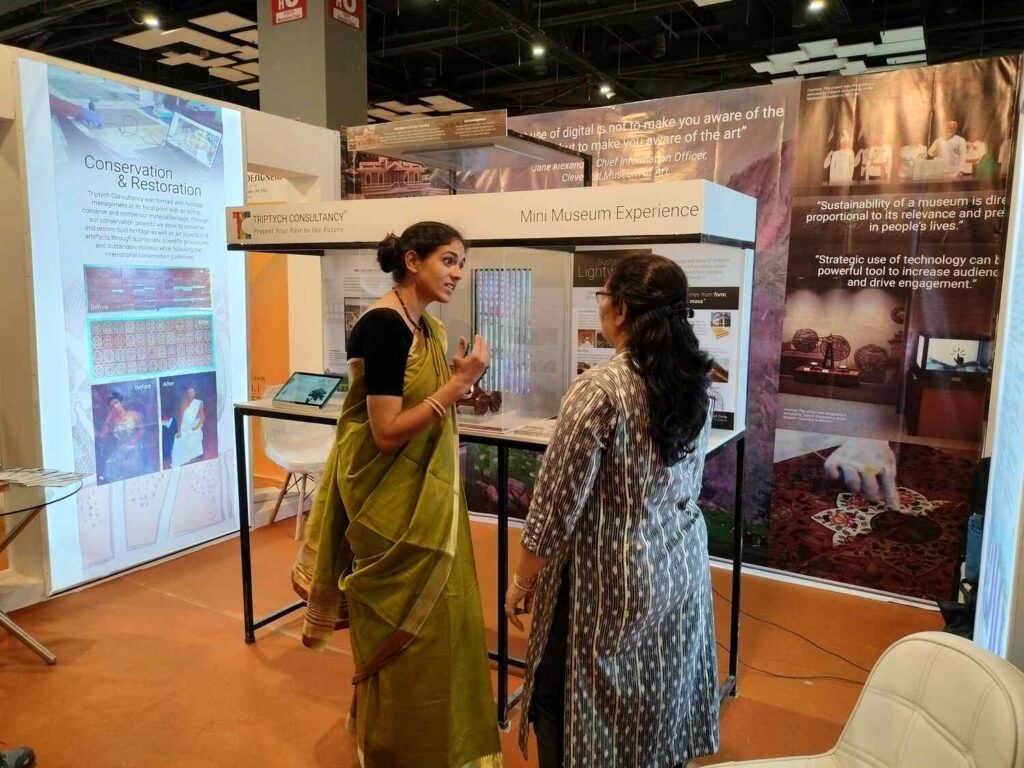
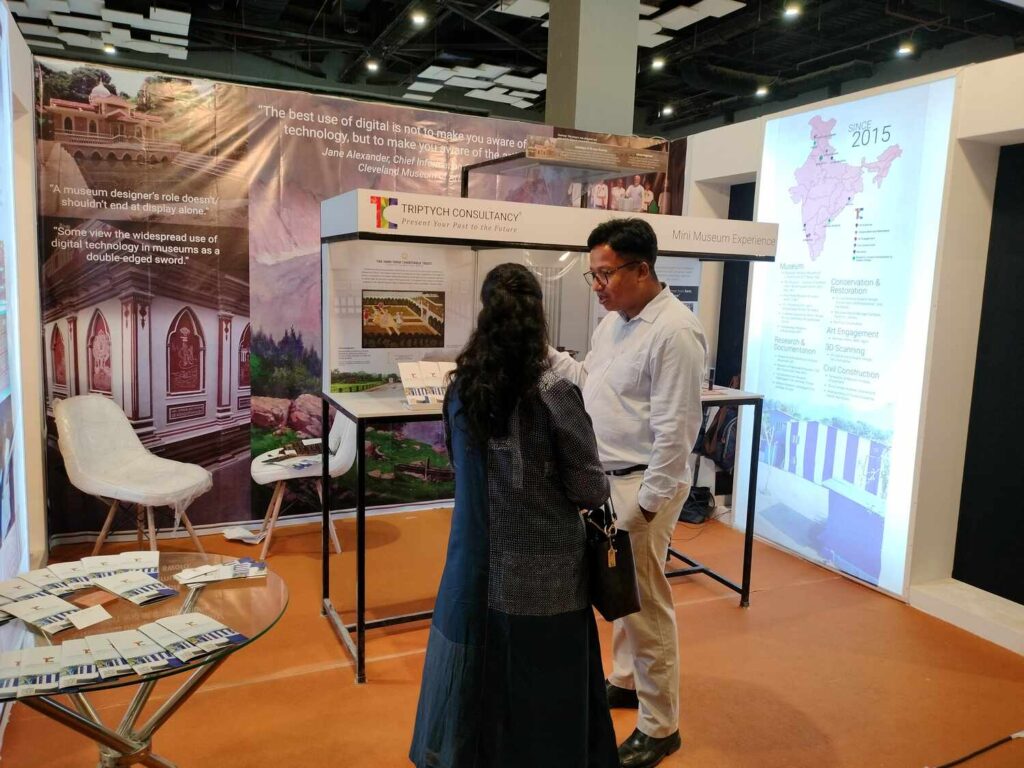
We used the space to curate elements and create a mini-museum experience to illustrate the above statement and in the process present our company profile and the services and products we offer. We collaborated with two museums we have worked with in the past, the Amar Mahal Museum & Library, Jammu and Shri Parijnanashram Vastu Sangrahalaya, Karnataka. The basic physical elements on display were the replica of a miniature painting from the Nala-Damyanti miniature paintings series from the Aram Mahal Museum and a miniature replica of the wooden festive rath from Shri Parijnanashram Vastu Sangrahalaya. There was a section on conservation and restoration and a conceptual plan for a lightweight museum building.
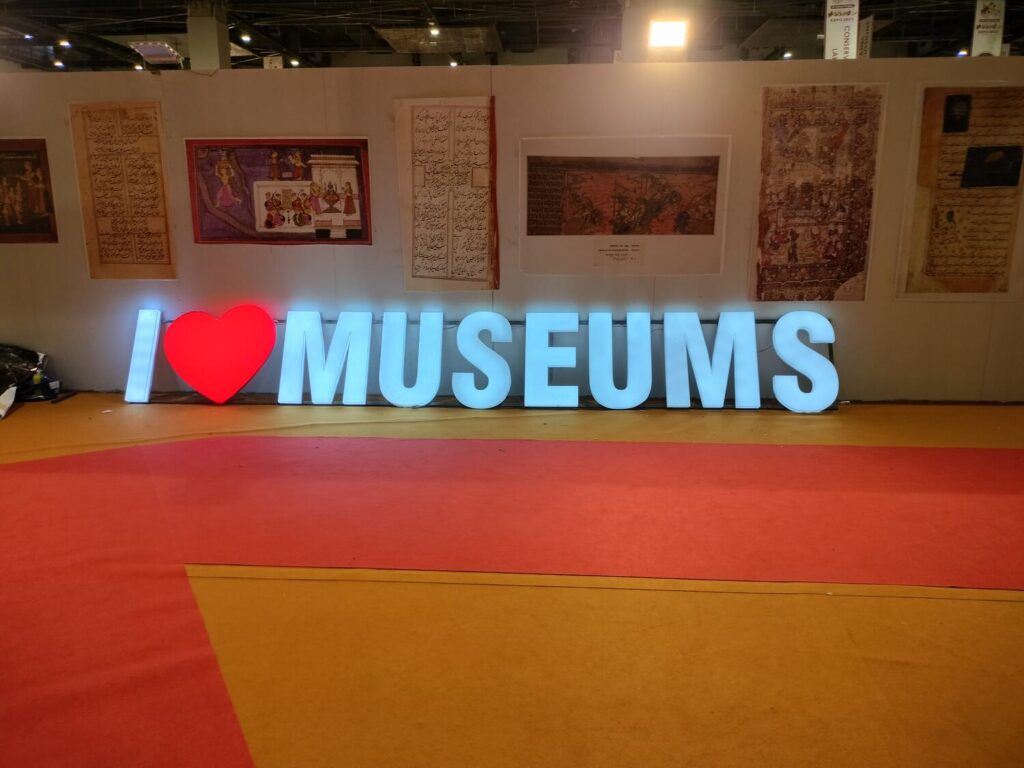
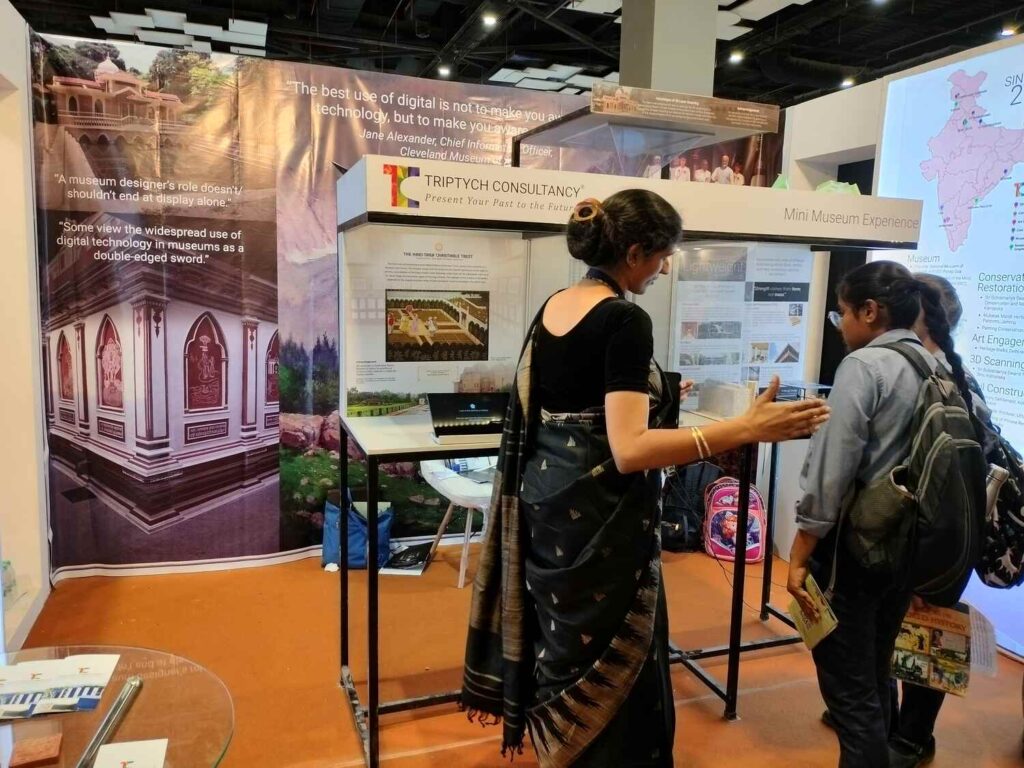
While interacting with our visitors we addressed the issue of ongoing technological change and constant upgradation in technology leading to the museum technology at times turning obsolete. As the technology changes and upgrades the technological trends of yesterday become obsolete and thus lead to enormous investment in short periods for upgradation. We had multiple dialogues with our visitors through which we addressed this issue and tried to introduce the idea of sustainable technology where we use simple technologies to create different experiences. We demonstrated this through the display of the miniature Rath model, wherein the background was designed such that a visitor can see and focus only on the rath from one side and as he/she moved to the other side, video footage of the actual rathotsav would be revealed behind the model of the rath. Similarly, an interactive touchpad was installed in front of the miniature painting that provided all most all the information about the painting. One final piece of information was not presented on the screen instead the visitor was encouraged to look at the painting on display and identify it for themselves. The idea here was to bring the visitor’s focus back on to the artifact on display.

